Effects of PHENYLALANINE AMMONIA LYASE (PAL) knockdown on cell wall composition, biomass digestibility, and biotic and abiotic stress responses in Brachypodium
- PMID: 26093023
- PMCID: PMC4493789
- DOI: 10.1093/jxb/erv269
Effects of PHENYLALANINE AMMONIA LYASE (PAL) knockdown on cell wall composition, biomass digestibility, and biotic and abiotic stress responses in Brachypodium
Abstract
The phenylpropanoid pathway in plants synthesizes a variety of structural and defence compounds, and is an important target in efforts to reduce cell wall lignin for improved biomass conversion to biofuels. Little is known concerning the trade-offs in grasses when perturbing the function of the first gene family in the pathway, PHENYLALANINE AMMONIA LYASE (PAL). Therefore, PAL isoforms in the model grass Brachypodium distachyon were targeted, by RNA interference (RNAi), and large reductions (up to 85%) in stem tissue transcript abundance for two of the eight putative BdPAL genes were identified. The cell walls of stems of BdPAL-knockdown plants had reductions of 43% in lignin and 57% in cell wall-bound ferulate, and a nearly 2-fold increase in the amounts of polysaccharide-derived carbohydrates released by thermochemical and hydrolytic enzymic partial digestion. PAL-knockdown plants exhibited delayed development and reduced root growth, along with increased susceptibilities to the fungal pathogens Fusarium culmorum and Magnaporthe oryzae. Surprisingly, these plants generally had wild-type (WT) resistances to caterpillar herbivory, drought, and ultraviolet light. RNA sequencing analyses revealed that the expression of genes associated with stress responses including ethylene biosynthesis and signalling were significantly altered in PAL knocked-down plants under non-challenging conditions. These data reveal that, although an attenuation of the phenylpropanoid pathway increases carbohydrate availability for biofuel, it can adversely affect plant growth and disease resistance to fungal pathogens. The data identify notable differences between the stress responses of these monocot pal mutants versus Arabidopsis (a dicot) pal mutants and provide insights into the challenges that may arise when deploying phenylpropanoid pathway-altered bioenergy crops.
Keywords: Bioenergy; Fusarium; ferulic acid; grass; herbivory; lignin; phenylpropanoid; saccharification; tyrosine ammonia lyase; ultraviolet light..
© The Author 2015. Published by Oxford University Press on behalf of the Society for Experimental Biology.
Figures
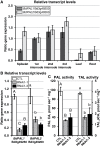
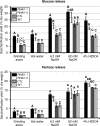
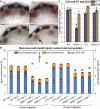
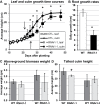
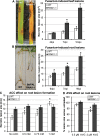
References
-
- Abramoff MD, Magelhaes PJ, Ram SJ. 2004. Image processing with ImageJ. Biophotonics International 11, 36–42.
-
- Barros-Rios J, Malvar RA, Jung HJ, Santiago R. 2011. Cell wall composition as a maize defense mechanism against corn borers. Phytochemistry 72, 365–371. - PubMed
-
- Bily AC, Reid LM, Taylor JH, et al. 2003. Dehydrodimers of ferulic acid in maize grain pericarp and aleurone: resistance factors to Fusarium graminearum . Phytopathology 93, 712–719. - PubMed
-
- Boerjan W, Ralph J, Baucher M. 2003. Lignin biosynthesis. Annual Review of Plant Biology 54, 519–546. - PubMed
-
- Bollina V, Kushalappa AC, Choo TM, Dion Y, Rioux S. 2011. Identification of metabolites related to mechanisms of resistance in barley against Fusarium graminearum, based on mass spectrometry. Plant Molecular Biology 77, 355–370. - PubMed
Publication types
MeSH terms
Substances
Grants and funding
LinkOut - more resources
Full Text Sources
Other Literature Sources

